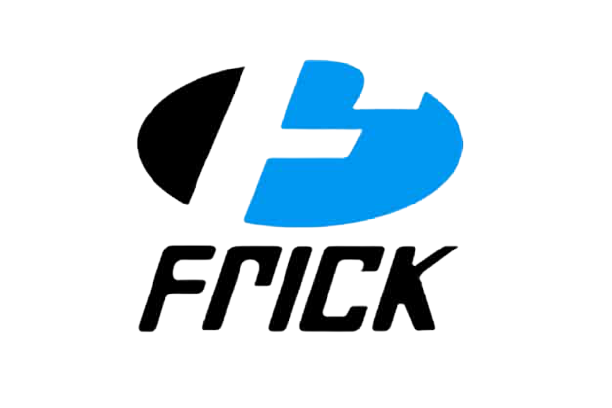
Frick India Limited
DRHP Status : Not Filed
3340
| P&L Statement | 2021 | 2022 | 2023 | 2024 |
|---|---|---|---|---|
| Revenue | 227 | 280 | 363 | 481 |
| Cost of Material Consumed | 139 | 204 | 256 | 326 |
| Gross Margins | 38.77 | 27.14 | 29.48 | 32.22 |
| Change in Inventory | 5 | -13 | -13 | 10 |
| Employee Benefit Expenses | 37 | 43 | 51 | 60 |
| Other Expenses | 25 | 27 | 33 | 39 |
| EBITDA | 21 | 19 | 36 | 46 |
| OPM | 9.25 | 6.79 | 9.92 | 9.56 |
| Other Income | 10 | 7 | 6 | 12 |
| Finance Cost | 2 | 2 | 2 | 3 |
| D&A | 2 | 2 | 2 | 2 |
| EBIT | 19 | 17 | 34 | 44 |
| EBIT Margins | 8.37 | 6.07 | 9.37 | 9.15 |
| PBT | 27 | 22 | 38 | 53 |
| PBT Margins | 11.89 | 7.86 | 10.47 | 11.02 |
| Tax | 6 | 5 | 10 | 11 |
| PAT | 21 | 17 | 28 | 42 |
| NPM | 9.25 | 6.07 | 7.71 | 8.73 |
| EPS | 350 | 283.33 | 466.67 | 700 |
Financial Ratios |
2021 | 2022 | 2023 | 2024 |
|---|---|---|---|---|
| Operating Profit Margin | 9.25 | 6.79 | 9.92 | 9.56 |
| Net Profit Margin | 9.25 | 6.07 | 7.71 | 8.73 |
| Earning Per Share (Diluted) | 350 | 283.33 | 466.67 | 700 |
| Assets | 2021 | 2022 | 2023 | 2024 |
|---|---|---|---|---|
| Fixed Assets | 9 | 9 | 10 | 11 |
| CWIP | 0.5 | 0 | 0 | 0 |
| Investments | 25 | 26 | 31 | 42 |
| Trade Receivables | 84 | 76 | 86 | 113 |
| Inventory | 39 | 61 | 90 | 88 |
| Other Assets | 112.5 | 118 | 130 | 135 |
| Total Assets | 270 | 290 | 347 | 389 |
| Liabilities | 2021 | 2022 | 2023 | 2024 |
|---|---|---|---|---|
| Share Capital | 0.6 | 0.6 | 0.6 | 0.6 |
| FV | 10 | 10 | 10 | 10 |
| Reserves | 187 | 203 | 231 | 273 |
| Borrowings | 15 | 15 | 17 | 21 |
| Trade Payables | 19 | 15 | 21 | 24 |
| Other Liabilities | 48.4 | 56.4 | 77.4 | 70.4 |
| Total Liabilities | 270 | 290 | 347 | 389 |
| Name | Holding |
|---|---|
| Promoters | 62.53% |
| Public | 37.47% |
Coming soon...
Coming soon...
Frick India Limited, established in 1962, is a global leader in manufacturing and a turnkey solutions provider for industrial refrigeration equipment, with a focus on energy-efficient and reliable systems, serving various industries in India and exporting to over 50 countries.
Strengths:
-
Established Market Position: With over five decades in the industrial refrigeration industry, Frick India has built a strong reputation, benefiting from regular orders across multiple sectors.
-
Healthy Financial Risk Profile: The company maintains a robust financial position, characterized by a substantial net worth and low debt levels. As of March 31, 2024, the net worth stood at ₹203 crore, with a total outside liabilities to adjusted net worth ratio of 0.42. Debt protection metrics are also comfortable, with an interest coverage ratio of 11.4 times and a net cash accrual to adjusted debt ratio of 1.17 in fiscal 2022.
-
Strong Liquidity: Frick India exhibits strong liquidity, with low bank limit utilization averaging 24% over 14 months through September 2024. The company holds significant liquid funds, including mutual funds, equities, bonds, unencumbered cash, and fixed deposits totaling around ₹54-55 crore as of September 30, 2024.
Weaknesses:
-
Susceptibility to Intense Competition and Volatile Input Prices: Frick India faces intense competition from large players like Kirloskar Pneumatic Company Ltd and Voltas Ltd, as well as unorganized entities. This competition, coupled with volatility in raw material prices, particularly steel, has led to fluctuating operating margins between 7-11% over five fiscals through 2025. The company's limited ability to pass on increased raw material costs, especially in short-duration contracts, further impacts profitability
-
Large Working Capital Requirement: The company's operations demand substantial working capital, with gross current assets ranging between 180-230 days over three fiscals ending March 2024. This is primarily due to significant receivables and inventory levels, with some payments realized 12-18 months post-installation, leading to sizeable receivables exceeding six months
-
Employee Concerns: Employee reviews indicate areas for improvement, particularly regarding salary structures, management practices, and work-life balance. Some employees have reported low salaries, lack of canteen and transport facilities, and poor leave policies. Additionally, while some employees praise the company's work culture and timely salary payments, others highlight issues such as strong worker unions and management challenges.

